A Revised Phylogenetic Classification for Viola (Violaceae)
- PMID: 36079606
- PMCID: PMC9460890
- DOI: 10.3390/plants11172224
A Revised Phylogenetic Classification for Viola (Violaceae)
Abstract
The genus Viola (Violaceae) is among the 40-50 largest genera among angiosperms, yet its taxonomy has not been revised for nearly a century. In the most recent revision, by Wilhelm Becker in 1925, the then-known 400 species were distributed among 14 sections and numerous unranked groups. Here, we provide an updated, comprehensive classification of the genus, based on data from phylogeny, morphology, chromosome counts, and ploidy, and based on modern principles of monophyly. The revision is presented as an annotated global checklist of accepted species of Viola, an updated multigene phylogenetic network and an ITS phylogeny with denser taxon sampling, a brief summary of the taxonomic changes from Becker's classification and their justification, a morphological binary key to the accepted subgenera, sections and subsections, and an account of each infrageneric subdivision with justifications for delimitation and rank including a description, a list of apomorphies, molecular phylogenies where possible or relevant, a distribution map, and a list of included species. We distribute the 664 species accepted by us into 2 subgenera, 31 sections, and 20 subsections. We erect one new subgenus of Viola (subg. Neoandinium, a replacement name for the illegitimate subg. Andinium), six new sections (sect. Abyssinium, sect. Himalayum, sect. Melvio, sect. Nematocaulon, sect. Spathulidium, sect. Xanthidium), and seven new subsections (subsect. Australasiaticae, subsect. Bulbosae, subsect. Clausenianae, subsect. Cleistogamae, subsect. Dispares, subsect. Formosanae, subsect. Pseudorupestres). Evolution within the genus is discussed in light of biogeography, the fossil record, morphology, and particular traits. Viola is among very few temperate and widespread genera that originated in South America. The biggest identified knowledge gaps for Viola concern the South American taxa, for which basic knowledge from phylogeny, chromosome counts, and fossil data is virtually absent. Viola has also never been subject to comprehensive anatomical study. Studies into seed anatomy and morphology are required to understand the fossil record of the genus.
Keywords: Viola; Violaceae; fossils; monophyletic; morphology; nomenclature; phylogeny; polyploidy; taxonomic revision.
Conflict of interest statement
The authors declare no conflict of interest. The funders had no role in the design of the study; in the collection, analyses, or interpretation of data; in the writing of the manuscript, or in the decision to publish the results.
Figures
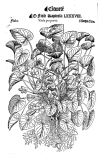

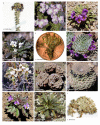




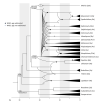
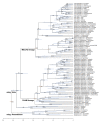
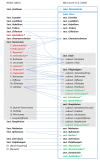
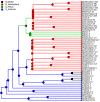


















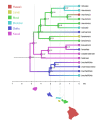










References
-
- Becker W. Viola L. In: Engler A., editor. Die Natürlichen Pflanzenfamilien 21. Parietales und Opuntiales. Volume 21. Wilhelm Engelmann; Leipzig, Germany: 1925. pp. 363–376.
-
- Ballard H.E., Sytsma K.J., Kowal R.R. Shrinking the violets: Phylogenetic relationships of infrageneric groups in Viola (Violaceae) based on internal transcribed spacer DNA sequences. Syst. Bot. 1999;23:439–458. doi: 10.2307/2419376. - DOI
-
- Wahlert G.A., Marcussen T., de Paula-Souza J., Feng M., Ballard H.E. A phylogeny of the Violaceae (Malpighiales) inferred from plastid DNA sequences: Implications for generic diversity and intrafamilial taxonomy. Syst. Bot. 2014;39:239–252. doi: 10.1600/036364414X678008. - DOI
-
- Marcussen T., Ballard H.E., Wahlert G.A., de Paula-Souza J. Dated phylogeny and historical biogeography of Violaceae. Unpublished manuscript .
-
- Stevens P.F. Angiosperm Phylogeny Website. Version 14, July 2017 [and more or less continuously updated since] [(accessed on 15 August 2022)]. Available online: http://www.mobot.org/MOBOT/research/APweb/
Publication types
LinkOut - more resources
Full Text Sources
Research Materials

